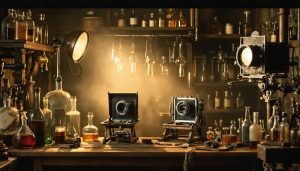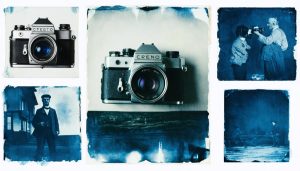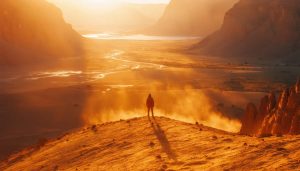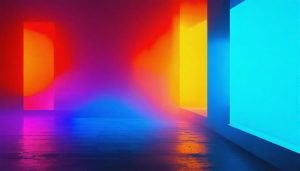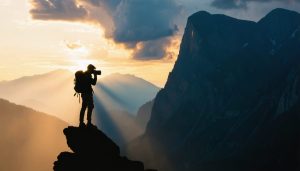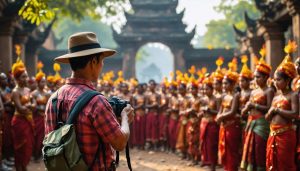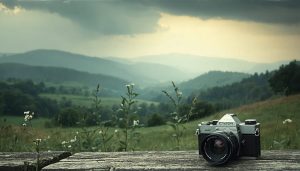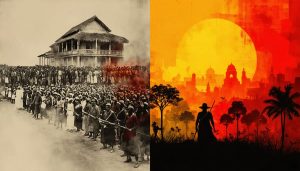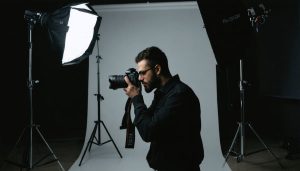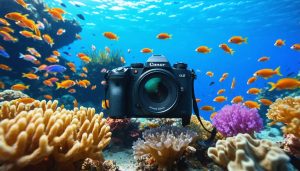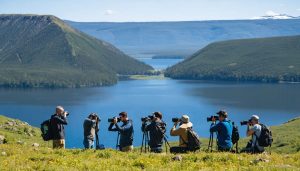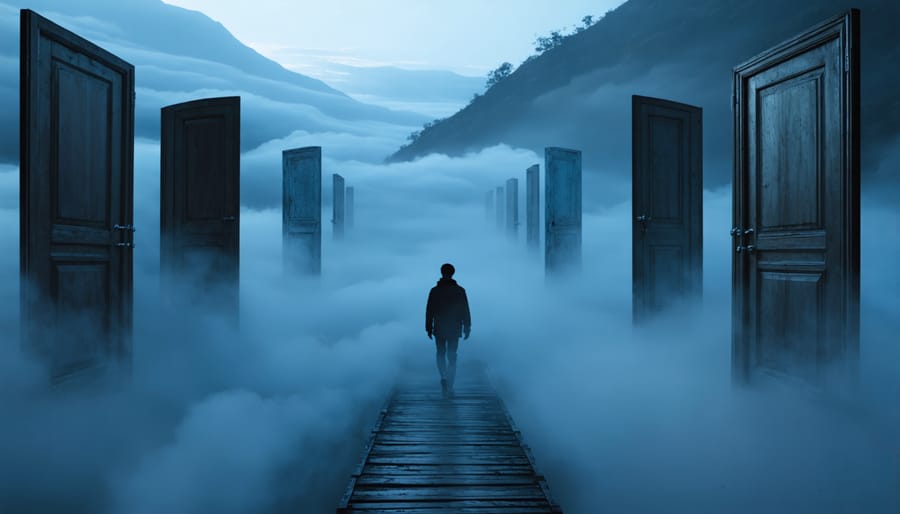
Transform ordinary photographs into surreal masterpieces by combining multiple exposures in-camera, utilizing long exposures with intentional camera movement, and layering disparate elements through double exposure techniques. Much like the pioneers of historic photography techniques, today’s surrealist photographers blur the line between reality and dreams through calculated technical manipulation. Master the interplay of light and shadow by shooting during blue hour, when reality naturally shifts into the surreal, while employing prisms, mirrors, and textured glass to fragment and distort your compositions. Digital artists can push boundaries further through perspective warping, selective color manipulation, and composite imaging—techniques that build upon surrealism’s foundation of challenging perceived reality through visual disruption. This artistic approach demands both technical precision and creative vision, merging the mechanical accuracy of photography with the boundless imagination of surrealist expression.
When Reality Meets Dreams: Understanding Surrealist Photography
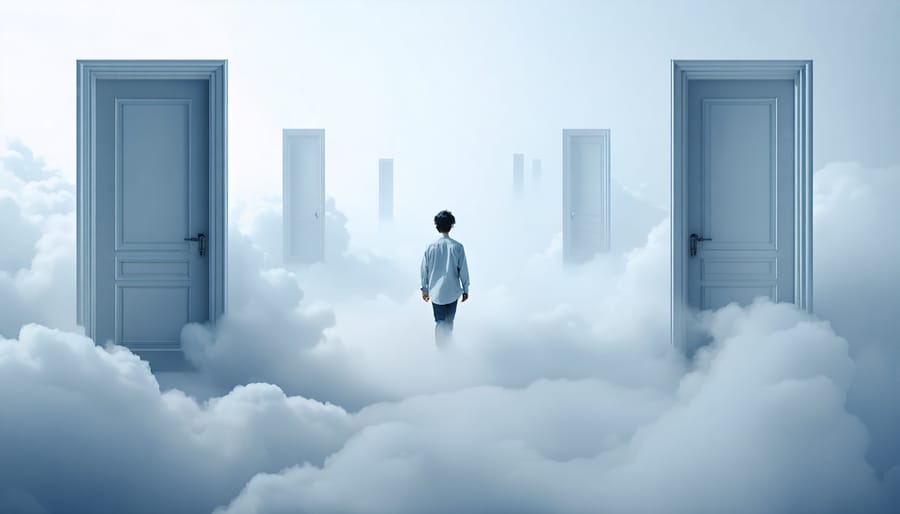
Key Elements of Surrealist Photography
Surrealist photography relies on several key compositional elements that work together to create dreamlike, thought-provoking images. The most fundamental element is juxtaposition, where seemingly unrelated objects or subjects are placed together to create new meanings and challenge viewers’ expectations. Scale manipulation is another crucial technique, where photographers deliberately distort size relationships to create unsettling or impossible scenes.
Multiple exposure and composite imagery allow photographers to layer different realities within a single frame, while unusual angles and perspectives help break free from conventional ways of seeing. The manipulation of light and shadow plays a vital role, often creating dramatic contrasts or ethereal effects that enhance the surreal quality of the image.
Texture and pattern distortion are frequently employed to create visual tension, while selective focus techniques can blur the line between reality and fantasy. Color, when used deliberately, can either heighten the dream-like quality of an image or create stark emotional contrasts. The strategic use of negative space and minimalism often amplifies the impact of surreal elements by isolating them within the frame.
The Bridge to Abstract Expression
In the evolving landscape of photography, surrealism serves as a vital bridge to abstract expression, allowing photographers to unleash your creative vision beyond conventional boundaries. This connection manifests through techniques like multiple exposures, intentional camera movement, and digital manipulation, where reality begins to blur into abstract forms and emotions.
Modern photographers often find themselves naturally transitioning between surrealist concepts and abstract expression, using light, shadow, and perspective to create images that challenge perception. By deliberately distorting familiar subjects or combining unexpected elements, photographers can create works that exist in the space between recognizable reality and pure abstraction.
The beauty of this intersection lies in its flexibility. Whether through in-camera techniques like long exposures and creative focusing, or post-processing methods that push the boundaries of traditional photography, artists can explore both surrealist narratives and abstract visual elements simultaneously. This fusion has become increasingly relevant in contemporary photography, where digital tools have expanded the possibilities for creative expression while maintaining the dreamlike quality that defines surrealist work.
Essential Techniques for Surrealist Photography
Multiple Exposure Magic
Multiple exposure photography opens a gateway to the surreal by layering two or more images within a single frame, creating ethereal and dreamlike results. This technique, pioneered by surrealist photographers like Maurice Tabard in the 1930s, remains a powerful tool for contemporary artists seeking to blur the lines between reality and imagination.
In-camera multiple exposures can be achieved on both film and digital cameras. With film, it’s a matter of not advancing the film between shots, while modern digital cameras often have built-in multiple exposure modes. The key to creating compelling multiple exposures lies in understanding how light combines – each exposure typically needs to be underexposed by a stop or two to prevent overexposure in the final image.
Consider starting with simple subjects: a silhouette against a textured background, or combining portraits with natural elements like trees or clouds. The magic happens in the unexpected interactions between layers – a face emerging from flowering branches, or cityscapes dissolving into ocean waves. The technique requires experimentation and embraces happy accidents, making it perfectly aligned with surrealism’s celebration of the unconscious and unexpected.
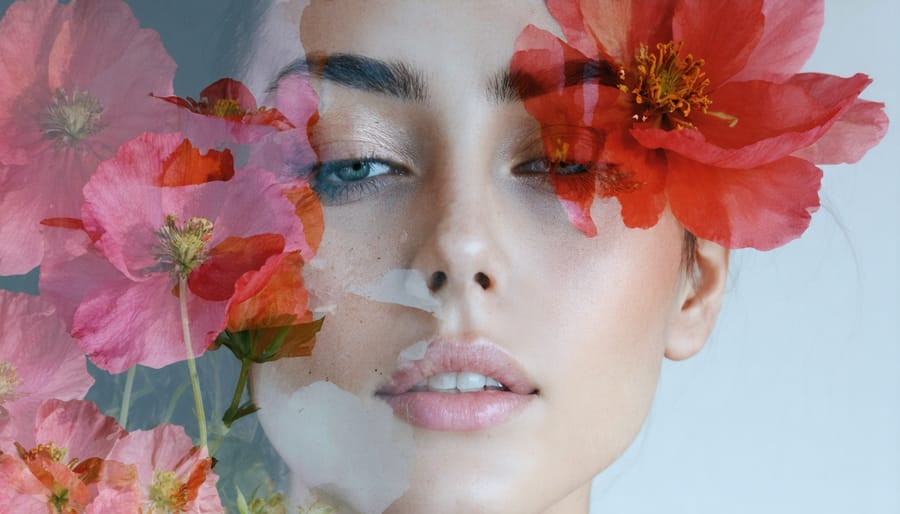
Perspective Manipulation
Perspective manipulation stands as a cornerstone of surrealist photography, where reality bends to the photographer’s creative vision. By carefully controlling camera angles, lens choice, and subject placement, photographers can create images that challenge viewers’ perceptions of space and dimension.
One popular technique involves forced perspective, where objects appear larger, smaller, or differently positioned than they actually are. This can be achieved by positioning subjects at varying distances from the camera while maintaining their visual relationship in the frame. For instance, a person might appear to be holding the sun or standing on top of a tiny building.
Dutch angles, where the camera is deliberately tilted, create an immediate sense of disorientation and unease. When combined with wide-angle lenses, this technique can dramatically distort architecture and landscapes, making straight lines appear curved and normal spaces seem alien.
Multiple exposure techniques offer another powerful tool for perspective manipulation. By layering several images with different perspectives, photographers can create impossible scenes where gravity seems optional and spatial relationships defy logic. Digital photographers can achieve similar effects through composite imaging, while film enthusiasts often use in-camera double exposures.
Color and Light Distortion
Color and light manipulation are powerful tools in creating surreal photographic effects that challenge reality and perception. Understanding color theory in photography is essential for creating these dreamlike images, as unexpected color combinations can immediately transport viewers into an alternate reality.
Photographers can achieve surreal effects through various techniques, such as using colored gels on light sources, adjusting white balance to create unnatural color casts, or employing split-toning in post-processing. Long exposures with moving colored lights can create ethereal light trails and patterns that defy normal visual experience.
Light distortion techniques, like shooting through prisms, crystals, or textured glass, can fragment and multiply your subject in fascinating ways. Consider using mirrors or reflective surfaces to create symmetrical distortions that blur the line between reality and illusion. For digital photographers, selective color adjustments and gradient mapping can transform ordinary scenes into otherworldly landscapes.
Remember that the goal isn’t just to create unusual effects, but to use these techniques purposefully to convey your artistic vision and emotional intent.
Digital Post-Processing for Surrealism
Digital post-processing has revolutionized surrealist photography, offering unprecedented creative control and possibilities. Software like Adobe Photoshop and Luminar Neo enables photographers to blend multiple exposures, manipulate perspective, and create impossible scenarios with just a few clicks. Popular techniques include sky replacement, selective color manipulation, and advanced compositing to create dreamlike scenarios.
Layer masking has become particularly valuable for surrealist effects, allowing photographers to seamlessly combine elements from different images. Tools like the liquify filter can distort reality in ways that honor the surrealist tradition while pushing creative boundaries further. AI-powered features now make it possible to generate surreal elements or transform existing objects with remarkable precision.
Color grading plays a crucial role in enhancing the otherworldly quality of surrealist images. Split-toning, gradient mapping, and selective saturation adjustments can create ethereal atmospheres or stark contrasts that challenge viewers’ perceptions. Many photographers also employ texture overlays and displacement maps to add depth and complexity to their surrealist compositions.
When applying these digital techniques, the key is maintaining a balance between technical manipulation and artistic vision. The goal isn’t to simply create unusual effects, but to convey deeper meaning through carefully considered visual elements.
Camera Settings and Equipment
Essential Camera Gear
While surrealist photography is more about vision than gear, having the right equipment can help bring your imaginative concepts to life. A full-frame camera with high dynamic range capabilities is ideal, as it allows for better control over light and shadow – crucial elements in surrealist imagery. The Canon EOS R5 or Sony A7R IV are excellent choices, though any modern interchangeable lens camera will suffice.
Lens selection is particularly important. A versatile 24-70mm zoom lens serves as a great foundation, but consider adding these specialized options to your kit:
– A macro lens for capturing intricate details and creating unusual perspectives
– A wide-angle lens (14-35mm) for environmental distortion
– A fast prime lens (f/1.4 or f/1.8) for dreamy bokeh effects
Additional essential gear includes:
– A sturdy tripod for long exposures and precise compositions
– Various filters (neutral density, polarizing, and creative filters)
– A remote shutter release for capturing precise moments
– A selection of light modifiers (reflectors, diffusers, and colored gels)
– Basic props for creating in-camera effects
Post-processing tools are equally important. While Adobe Photoshop remains the industry standard for surrealist manipulation, consider adding specialized plugins or software for specific effects. Remember, the best gear is what you have available – many iconic surrealist photographs were created with basic equipment and innovative thinking.
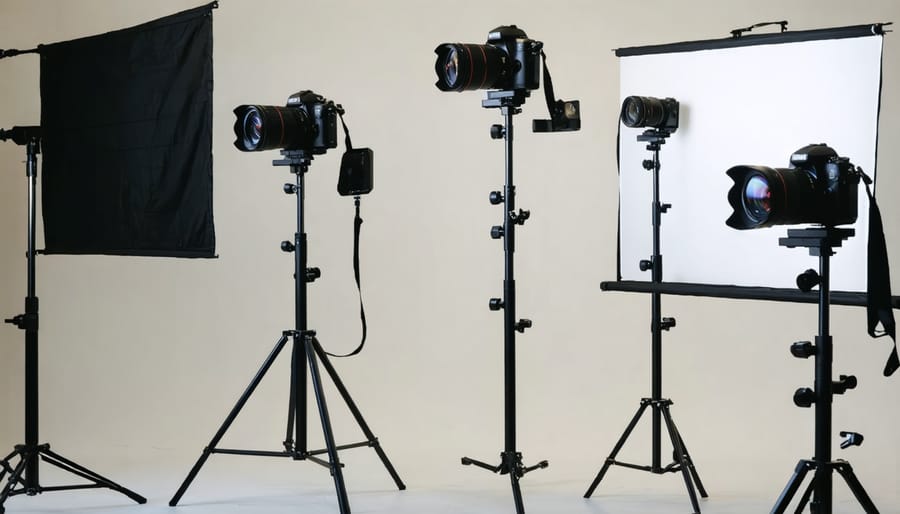
Optimal Camera Settings
To create compelling surrealist photographs, mastering your camera settings is essential. Start with a foundation of manual mode, which gives you complete control over your creative vision. For dreamlike motion blur, experiment with slow shutter speeds between 1/15 and 1 second, particularly effective when capturing flowing water or moving subjects.
Aperture choice plays a crucial role in surrealist imagery. Wide apertures (f/1.8 to f/2.8) create a shallow depth of field, perfect for isolating subjects and adding an ethereal quality to your images. Alternatively, small apertures (f/16 to f/22) ensure everything is in sharp focus, ideal for creating impossible landscapes or detailed composite shots.
ISO settings should generally be kept as low as possible to maintain image quality, but don’t be afraid to push them higher when needed. Some grain or noise can actually enhance the surreal quality of certain images, particularly in low-light situations.
For double exposure effects, many modern cameras offer built-in multiple exposure modes. If your camera has this feature, start with two exposures and experiment with different exposure compensations (-1 EV for each frame often works well). When shooting in challenging lighting conditions, bracketing your exposures can provide more options for post-processing manipulation.
Focus settings can be utilized creatively – try intentionally missing focus or using manual focus to achieve soft, dreamy effects. For maximum control, shooting in RAW format allows greater flexibility in post-processing, essential for achieving the final surreal vision you’re after.
Creative Projects to Try
Indoor Surrealist Scenes
Creating surrealist scenes indoors offers photographers complete control over their environment, making it an ideal starting point for experimental photography. Your home studio or living space can become a laboratory for crafting dreamlike images with everyday objects and controlled lighting.
Start by selecting a neutral backdrop – a plain wall or seamless paper works best. This allows you to focus on arranging your subjects without distracting elements. Common household items can become extraordinary when placed in unexpected contexts: floating teacups, levitating books, or impossibly balanced objects create instant surrealist appeal.
Multiple exposure techniques are particularly effective indoors, where you can precisely control lighting conditions between shots. Try photographing the same space twice, with your subject in different positions, then blend the images to create impossible scenarios. Mirrors and reflective surfaces can add layers of complexity to your compositions, creating visual puzzles that challenge viewers’ perceptions.
Lighting plays a crucial role in indoor surrealism. Using multiple light sources at unusual angles can create dramatic shadows and highlights that defy natural physics. Consider using colored gels on your lights to add otherworldly atmospheres. Long exposures combined with light painting techniques can transform ordinary spaces into ethereal dreamscapes.
Props like smoke machines, prisms, or textured glass can add mysterious elements to your scenes. Remember that successful surrealist photography often relies on meticulous attention to detail – take time to perfect your setup before shooting.
Outdoor Surrealist Adventures
The natural world provides an endless canvas for surrealist photography, where reality and imagination intertwine among forests, deserts, and coastlines. By carefully observing and manipulating natural elements, photographers can create compelling surrealist narratives without relying on digital manipulation.
Consider photographing reflections in still water bodies, where upside-down landscapes create a dreamlike symmetry. Early morning fog can transform familiar scenes into mysterious tableaux, while shooting through crystals or prisms can fragment and distort natural elements in fascinating ways. The golden and blue hours offer particularly magical lighting conditions that enhance the surreal quality of outdoor scenes.
Creative techniques like intentional camera movement during long exposures can turn trees into abstract brushstrokes, while multiple exposures can layer different natural elements into impossible compositions. Try photographing through translucent objects found in nature, such as leaves or ice, to add ethereal filtering effects to your images.
Weather phenomena present unique opportunities for surrealist photography. Lightning storms, cloud formations, and natural light phenomena like sun halos can be captured in ways that challenge viewers’ perceptions of reality. Position natural elements to create impossible perspectives, such as a small flower appearing to tower over distant mountains, or use forced perspective to play with scale relationships in the landscape.
Remember that patience is key when working with natural elements – sometimes waiting for the perfect atmospheric conditions can make the difference between a standard landscape shot and a truly surreal image.
Surrealism in photography offers endless possibilities for creative expression, pushing the boundaries between reality and imagination. Whether you’re working with traditional darkroom techniques or digital manipulation, the key is to experiment fearlessly and develop your unique artistic vision. Remember that successful surrealist photography often combines technical precision with emotional resonance, creating images that challenge viewers’ perceptions and invite deeper contemplation.
Don’t be afraid to mix different techniques we’ve discussed – double exposures, intentional camera movement, creative lighting, and digital manipulation can all work together to create compelling surrealist images. Start with simple experiments and gradually build your skills and confidence. The beauty of surrealist photography lies in its ability to transform ordinary scenes into extraordinary visions, limited only by your imagination.
Keep practicing, stay curious, and most importantly, have fun exploring the fascinating world where dreams and reality converge through your lens.

